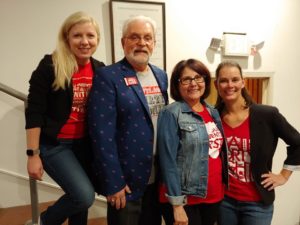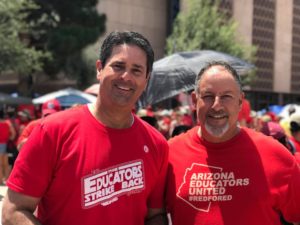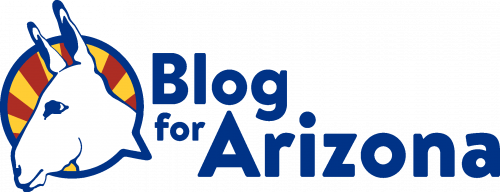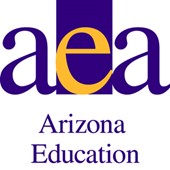As Laurie Roberts of Az Central points out, good legislation did come out of the Arizona State Legislature with regards to measures on giving rights to child rape victims, texting while driving. ELL instruction, AIDs education programs, reforming health care facilities so no more Hacienda horror stories occur, and a much-needed drought plan with neighboring states.
Joanna Allhands added in a piece of her own that the legislature took steps to reform standardized testing by 2021 and do away with the statewide teaching evaluation system.
Finally, it is important to point out that the State Budget, passed with only Republican votes saw increases or stabilization in investments in:
- K-12 Education
- Community Colleges (except for Maricopa and Pima)
- Housing Assistance
- Kids Care for children who need health insurance.
The people will take note of these positive developments.
However, people will also take note and remember that this legislature and Governor advanced measures that suppress the Democratic process and potentially challenge educators and their rights to Freedom of Speech.
They will also remember that the Republicans, when given an opportunity to give larger increases to K-12 education and other areas that would greatly assist vulnerable populations, decided instead to give a $386 million dollar tax cut.
The response from leading Democrats, Progressive Economic Specialists, and Education Activist groups have been near universal that the Republican majority wasted a golden opportunity to restore fiscal stability, education funding to 2008 levels (never mind that we should be funding schools according to 2019 needs) and other areas in favor of tax cuts for the 29th time in 30 years.
Just as the State Senate was about to consider the budget on Memorial Day, a group of five Democratic State Representatives (Kelli Butler, Pamela Powers Hanley, Mitzi Epstein, Kirsten Engel, and Isela Blanc), in a Facebook video budget update called the budget “fiscally irresponsible” because of its enacting of tax cuts with a temporary surplus and an “overreliance” on regressive sales taxes. They also said that this budget could “set us off a fiscal cliff in 2022, 2024, 2025 with no long term plan.” They also said this was a “missed opportunity” to use some of that surplus to fully fund “education, our teachers and educators, infrastructure, and affordable housing.”

Following the passage of the budget, Superintendent of Public Instruction Kathy Hoffman issued a statement, relaying:
“This year, the state made some movements in the right direction by funding several K-12 education initiatives, including giving schools more money to spend on new counselors, the next installment of the promised 20×2020 teacher raises, and increased funding to address our teacher shortage by training the next generation of educators. However, it is disheartening to see another tax cut of nearly $400 million when Arizona’s education spending remains among the lowest in the nation.”
“While the department received critical funds needed to begin upgrading our school finance payment system, currently running on outdated 1990’s technology, many of our budget requests were not granted. We were not given the spending authority for anywhere close to what is needed to manage the ESA program effectively and efficiently. This money would have directly supported ESA families with improved customer service, as well as helped us provide a smooth transition to our new ESA payment system. This new payment system will make it easier for families to appropriately spend their funds and cut back on cumbersome processes which currently leave too much room for error or misspending to occur. Another statutorily mandated program, the Office of Indian Education, also remains unfunded. Additionally, this budget places a strain on available federal matching funds to support Adult Education programs, money which would have directly prepared individuals for the workforce.”
“I have had the wonderful opportunity to travel the state, meeting with countless administrators, teachers, and students. These visits have made clear to me that we must return to pre-recession funding levels, with a sustainable, dedicated revenue source. Next session, I look forward to fighting for this as well as for increased special education funding. I will also continue to advocate for more money to support the paraprofessionals and other school employees who play a vital role in educating our students.”
“All students deserve access to a high-quality public education – no matter their zip code or their background. If the state cannot bring itself to fully fund education during a year with a massive budget surplus, when will it do so? We must find the collective will to make this happen. Our future depends on it.”

Former State Democratic House and Senate Leader and now head of the Arizona Center for Economic Progress David Lujan commented that:
“A state budget which makes a new deposit into the Rainy Day Fund to better prepare Arizona for the next recession is overshadowed by more than $386 million in fiscally irresponsible and permanent tax cuts – foregoing revenue that could have otherwise been used to make new investments in public education and affordable housing. Arizona lawmakers had an opportunity to fully restore the additional assistance funding that schools need for textbooks and other classroom resources, funding that was cut more than a decade ago, but instead, they chose tax cuts over funding Arizona’s public schools. In poll after poll, Arizona voters have consistently stated they prefer funding our public schools over tax cuts, but yet another legislative session has come to an end with lawmakers choosing tax cuts before students.”

Dawn Penich-Thacker, the Communications Director for Save Our Schools Arizona issued a more positive statement of the legislative session:
“The 2020 budget makes several significant gains for public education in Arizona, but there is still much more to do to restore funding cuts made since 2008.”
“In terms of progress, we are especially pleased to see the tremendous increase in funding for school counselors and social workers, the fulfillment of the next 5 percent teacher pay raise, and the investment into District Additional Assistance. This, on top of earlier achievements in suicide prevention programs, keeping much-needed tax dollars in public schools by blocking all six ESA voucher expansion efforts, and the scale-down of STO private school tax credits gives us a solid foundation upon which to enact bigger and better ideas to support Arizona students and communities next session.”
“Save Our Schools Arizona remains committed to our mission of increasing public school funding in impactful and equitable ways and advocating for tax dollar transparency and accountability. We are optimistic that after this legislative session, Arizona is in a better place than we were before to do right by our students, our families, and our future.”
The leading teachers union, Arizona Education Association, issued their own assessment of the budget:
“Teachers are still leaving Arizona, classrooms are still overcrowded, and our students still need nearly $700 million in public education funding. Arizona legislators had an opportunity to provide our students with the public education they deserve and, once again, they have failed to listen to their constituents.”
“Like all of the students in Arizona, my son has never had a fully funded education,” says AEA Vice President Marisol Garcia. “The state has money that can be used to restore the funding that has been cut from our schools, but lawmakers chose to fund tax cuts over Arizona’s students.”
The state budget includes nearly $400 million in new permanent tax cuts, further reducing the money available for public education. It also expands results-based funding from $40 million to $70 million. This program shifts money to schools in affluent neighborhoods and raises the stakes of standardized testing.
“This program threatens our students’ ability to learn and grow by creating another persistent systemic funding inequity for our schools,” says Garcia. “The state should direct that money towards restoring all school funding.”
For the past two weeks, hundreds of AEA members and #REDforED activists have come down to the Capitol to pack the House and Senate galleries and advocate for the resources they need for their students. They have sent thousands of emails, written hundreds of postcards, and made hundreds of phone calls to lawmakers because they each have a story to tell about a student or colleague whose needs are not being met by this state budget.
“As educators, our students are our number one priority,” says Garcia. “We are used to rolling up our sleeves and taking responsibility for their educational needs. As a parent, I will do what I can to ensure my child gets the public education he deserves. And as a voter, I know I have a responsibility to hold my elected officials responsible, and I can vote for representatives and initiatives that I support. Together, the educators, parents, and voters know that we have the power to do what lawmakers have failed to do, and that is fund our schools.”

Freshman State Representative from Legislative District 18 Jennifer Jermaine commented that:
“The FY2020 budget contained some good, some bad, and some ugly features. The good: I worked diligently to increase the school safety fund from $6 million to $20 million. This fund will allow local schools to choose between extra Counselors, Social Workers, and School Resource Officers. The budget also included the next installment of the 20×2020 raises for teachers, a larger investment than previous years into the Housing Trust Fund, and unfreezing and funding of KidsCare.”
“The bad: The budget contained permanent tax cuts because of a temporary surplus. This is fiscally irresponsible and dangerous. No one would run their household or business finances in this manner and neither should the state. I pushed for a sunset date on the tax cuts to match the sunset date on the federal Tax Cuts and Jobs Act – which was denied.”
“The ugly: This budget retaliates against educators who walked out of the classroom in 2018. It contains divisive language and violates the right of educators to free speech on their own time – outside of the classroom. The bad and ugly parts are why I voted no on the FY2020 budget.”
Both candidates for Maricopa County School Superintendent also voiced their concerns over the state budget passed on Monday.

Jeanne Casteen wrote that:
“I was able to make it to the Capitol on Wednesday, Friday, Saturday, and Monday this past week. It was inspiring to hear so many educators speak out at committee hearings, and to see the galleries filled with people dressed in red.”
“While the legislature made good on the promise to nominally increase teacher pay, they missed countless opportunities to help Arizona’s children, families, and educators.”
“Educators showed up in droves to rally for a restoration of pre-2008 public education funding, but the legislature felt it was more important to give out another $386 in permanent tax cuts while adding $500 million to the rainy day fund. Teachers in the overflow rooms cried out, “It’s raining in my classroom!” This isn’t an exaggeration, earlier this school year, in the middle school where I teach, this is what was happening on my campus.”
“Sure there is more money in the budget for education, but is it enough? Giving priority to a rainy day fund when it’s literally raining in Arizona classrooms is outrageous to educators in Arizona. If our legislators won’t fully fund education in Arizona NOW, with a budget surplus, when will they?”
“Of course, educators want a pay increase, but what many people don’t understand, is that the 5% pay increase is often split between employees at local districts. So that 5% “teacher raise” is a bit dishonest since most districts make the decision of splitting it with their classified staff. We need more funding for bus drivers, nurses, cafeteria workers, speech pathologists, counselors, etc., and most district teachers stand in solidarity with their colleagues to make sure all individuals involved in the education of our kids are fairly compensated.”
“It was extremely disappointing to see another expansion of results-based funding for schools with a total of $68 million in increases. That takes public funds directly from the vulnerable communities and school districts who need it the most, and research shows that the majority of this funding ends up serving high-income schools and/or charters.”
“One of the most disgraceful moments I witnessed at the Capitol was when House Republicans refused to approve $178,000 in funding (in an $11 BILLION budget) for pregnant mothers in need of dental work that could potentially save these mothers and their babies from medical complications, showing how little many Republicans care about Arizona’s children.”
“There is still not enough funding for District Additional Assistance (DAA, also known as “capital funding”). The $136 million given to this fund is nice but comes nowhere close to the over $2 billion dollars cut from this fund since 2009.”
“According to the ASBA, all these funding cuts total about $4.56 billion dollars, and teachers who were down at the Capitol were demanding action over lip service. I have so much respect for the teachers, parents, senators, and representatives who spent their holiday weekend advocating for our students, communities, and educators.”
“I’ve been going to the Capitol, advocating for my students, families, and colleagues for the last eight years, whether it is speaking at hearing committees or spending long days and nights at the Capitol. Each year, the sea of red grows a bit bigger. This is a grassroots movement, and I envision my campaign relying on that same kind of grassroots energy to put our legislature and governor under a spotlight when they shortchange our children, families, and communities.”

Jennifer Samuels stated:
“It’s frustrating to see yet another year go by as a missed opportunity to fund our K-12 schools. Arizonans overwhelmingly support investing in our education system and yet our elected leaders passed a nearly $400 million tax cut leaving us near last in the nation. It’s time to elect leaders who will listen to their constituents and support students and educators.”

Legislative District 23 State House Candidate Eric Kurland commented that:
“How are you ever going to get a budget that serves all Arizonans when the majority party can only use the letter R when counting to thirty-one and sixteen? It is well past time to place the people over party politics.”
Republicans had an opportunity to pursue bipartisan budget solutions to help children, educators and the most vulnerable in our state. While some investments have been made in these areas, Republicans have chosen to sacrifice fully funding schools and other priorities that would assist vulnerable stakeholders on the altar of tax cuts.
Superintendent Hoffman’s last sentence in her statement regarding the budget enacted earlier this week “Our future depends on it” encapsulates what is at stake for necessary future action in moving this state forward. These actions may include a new Invest in Ed Ballot Initiative or electing more Democrats to legislative and statewide offices in 2020 and 2022 that would result in greater attention to the economic and social areas to further strengthen people, schools, communities, and the state.
In the end, it is all up to the people. Hopefully, they will take note of what this budget represents and they will remember that a new direction is needed when they vote in 2020, 2022, and beyond.
Feature Cartoon from Steve Benson, editorial cartoonist for the Arizona Mirror
Discover more from Blog for Arizona
Subscribe to get the latest posts sent to your email.

